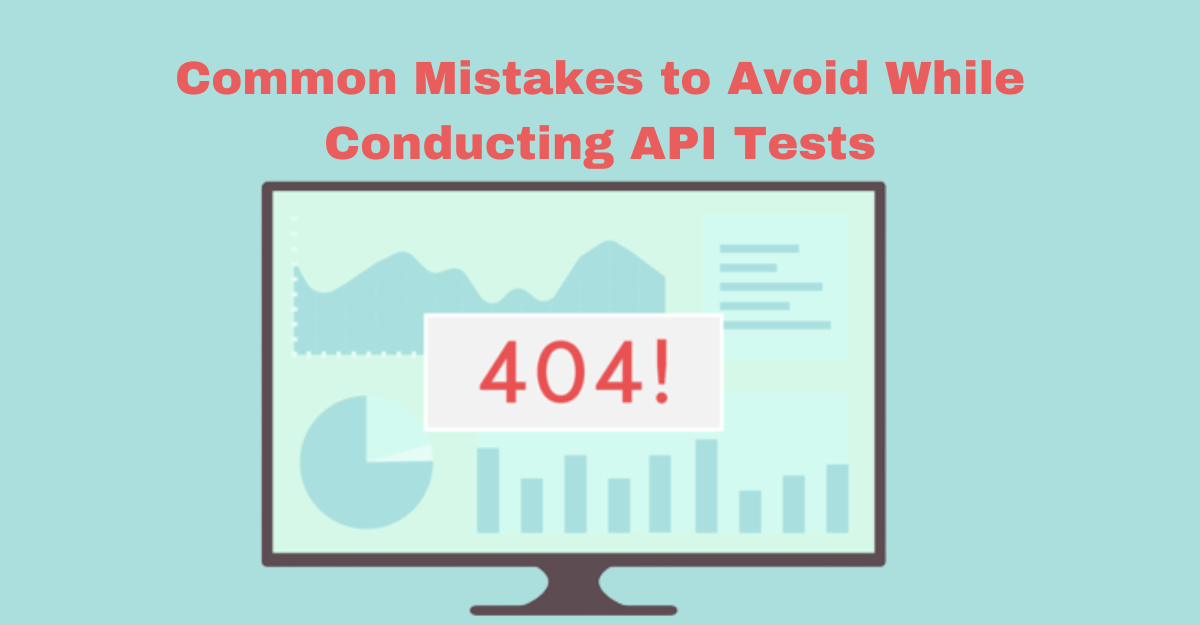Introduction
API testing is a critical part of the software development process. It helps to ensure that APIs are working as expected and that they can be used by other applications without errors. However, there are a number of common mistakes that can be made when conducting API tests.
Testing APIs in isolation:
Testing APIs in isolation means testing each API independently of the other APIs that it interacts with. This can lead to errors being missed, as the behavior of one API may depend on the behavior of another API. For example, if you have an API that returns a list of products, you may also have an API that allows users to add products to their cart. If you only test the product list API in isolation, you may not realize that the add-to-cart API is not working correctly. This is because the add-to-cart API may be expecting a product ID that is returned by the product list API.
Not using a test framework:
A test framework is a software tool that helps to automate the testing process. A test framework can make it easier to create, run, and manage test cases. It can also help to generate reports that show the results of the tests. There are many different test frameworks available, so you can choose one that meets your specific needs.
Not using data-driven testing:
Data-driven testing is a technique that involves using data sets to drive test cases. This help to ensure that all possible scenarios teste. For example, if you have an API that allows users to search for products, you may want to create a data set that contains a variety of different search terms. This will help to ensure that the API is able to handle all types of search requests.
Not using mocks and stubs:
Mocks and stubs are fake objects that can be used to simulate the behavior of real objects. This can be helpful for testing APIs that depend on other APIs or services. For example, if you have an API that allows users to purchase products, you may want to use a mock to simulate the behavior of the database that stores the product information. This will allow you to test the API without actually having to interact with the database.
Not documenting the tests:
It important to document the tests that create. This help to ensure that the tests can be easily understood and maintained. The documentation should include the purpose of the test, the steps that are being tested, the expected results, and any known issues.
Not testing edge cases:
Edge cases are situations that are outside of the normal range of operation for an API. These can be things like invalid input data, unexpected HTTP status codes, or timeouts. It’s important to test for edge cases to ensure that your API can handle unexpected situations gracefully. For example, you might test what happens if you try to pass in a negative number as a parameter, or if you try to access a resource that doesn’t exist.
Not documenting your tests:
It’s important to document your API tests so that you can easily understand what they are testing and how to interpret the results. This will make it easier to maintain your test suite and identify any regressions in your API. Your documentation should include information about the test cases, the expected results, and the steps to reproduce the test.
Not using a continuous integration (CI)/continuous delivery (CD) pipeline:
A CI/CD pipeline can help you automate the process of building, testing, and deploying your API. This can help you to improve the quality of your API and reduce the risk of introducing errors. A CI/CD pipeline typically includes the following steps:
- Build: The code compiled and packaged into a deployable artifact.
- Test: The artifact tested using a variety of tests, such as unit tests, integration tests, and system tests.
- Deploy: The artifact deployed to a production environment.
Not involving stakeholders in the testing process:
Stakeholders are people who have a vested interest in the success of your API. This includes people like developers, QA engineers, product managers, and customers. It’s important to involve stakeholders in the testing process so that they can provide feedback and help you to identify any areas that need improvement. Stakeholders can provide valuable input into the test cases, the expected results, and the steps to reproduce the test.
By avoiding these common mistakes, you can help to ensure that your API is well-tested and ready for use.
Here are some additional tips for conducting API tests:
- Start with a clear understanding of the API’s requirements. What are the expected inputs and outputs? What are the different types of requests that can be made?
- Use a variety of testing techniques, such as unit testing, integration testing, and system testing. Unit testing focuses on testing individual units of code, such as functions or classes. Integration testing focuses on testing how different units of code interact with each other. System testing focuses on testing the entire API as a whole.
- Test the API under different load conditions. What happens when there are a lot of concurrent users? What happens when the API is under high traffic?
- Monitor the API’s performance. How long does it take to respond to requests? How much memory does it use?
- Keep your test suite up-to-date as the API changes. As the API changes, it’s important to update your test suite to ensure that it continues to test the API effectively.
Conclusion
To conclude, avoiding common mistakes in API testing is essential. These include testing APIs in isolation, neglecting test frameworks, lacking data-driven testing, not utilizing mocks and stubs, and failing to document tests. By steering clear of these errors, you can enhance the effectiveness and reliability of your API tests.

